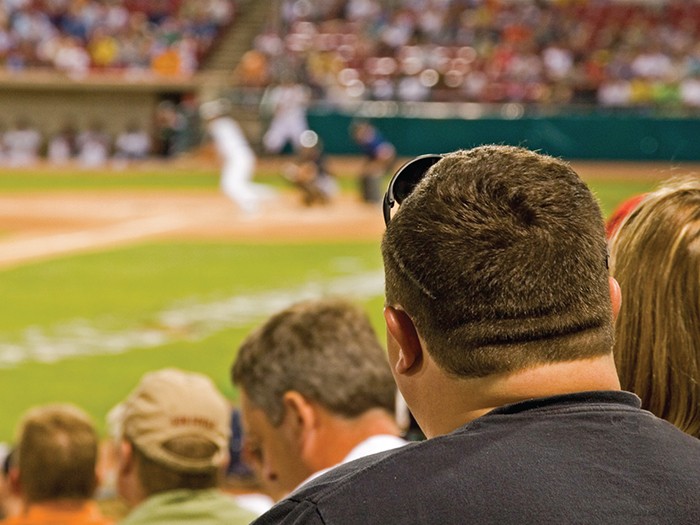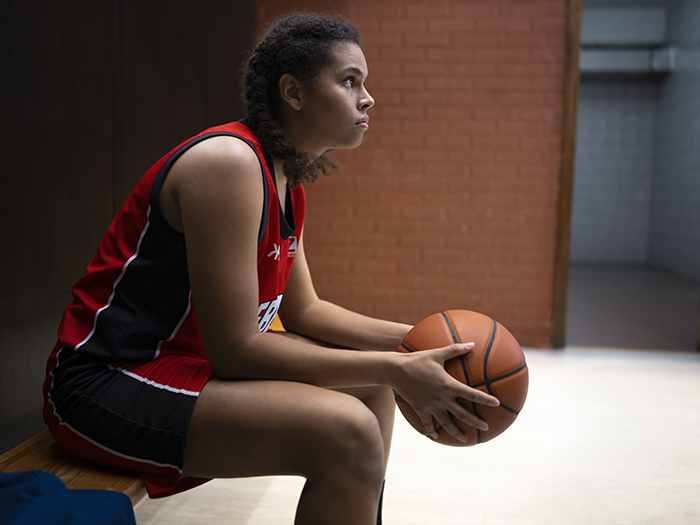Sports
Major League Liability

The concept of “safe!” is integral to the distinctively American game of baseball.
But until last winter, fans were pretty much on their own — i.e., unsafe — when it came to errant, sometimes lethal, but always punishing, foul balls or broken bat shards striking unfortunate spectators.
Many fans will remain at risk this season, but back in December, Major League Baseball finally decided it was time to act, sort of.
Looking to beef up fan safety, MLB issued recommendations — not hard and fast rules — that the 30 league teams extend the netting from behind home plate farther out, towards the dugouts and along the baselines.
The idea is that netting will practically eliminate line drive foul balls or bat shards reaching the crowd.
VIDEO: Shawn Cunningham saved his eight-year-old son Landon from being hit in the face by a bat during a spring training match in Florida between the Pittsburgh Pirates and Atlanta Braves.
According to MLB’s official statement, clubs are “encouraged to implement or maintain” netting (or another effective protective screen or barrier of their choosing) that shields from line-drive foul balls all field-level seats that are located between the near ends of both dugouts (the ends of the dugouts located closest to home plate, inclusive of any adjacent camera wells) and within 70 feet of home plate.
“Major League Baseball prides itself on providing fans in our ballparks with unparalleled proximity and access to our players and the game taking place on the field,” MLB Commissioner Rob Manfred said in December.
“At the same time, it is important that fans have the option to sit behind protective netting or in other areas of the ballpark where foul balls and bats are less likely to enter.”
As of early March, four MLB teams — The Phillies, Dodgers, Red Sox and Nationals — heeded the recommendation and agreed to extend the nets during the 2016 season (though some reports say all 30 teams will extend the netting by the season openers).
A high profile fan injury occurred last June 5 when Boston Red Sox fan Tonya Carpenter was seriously injured by a piece from a broken bat at Fenway Park.
Early on, Carpenter’s injuries were life threatening. She underwent extensive rehab but then faced a custody battle when her husband alleged she was too impaired to care for their 7-year-old son.
“I continue to believe the best way to incentivize the proper level of care is to impose strict liability on MLB clubs on the injuries to fans that result from game play.” — Ken Greenfield, a law professor and dean’s research scholar at Boston College.
So far, there have been no financial repercussions for the Red Sox.
The Role of Insurance
Baseball teams are protected by the century-old “baseball rule,” which puts the assumption of risk on fans (they know the risks when they sit in certain seats).
In 1998, yet another Red Sox fan, Jane Costa, was hit by a foul ball traveling at nearly 90 miles an hour while she sat behind the dugout. She suffered disfiguring injuries and amassed medical bills in the range of $500,000. Her lawsuit against the team was tossed out of court via summary judgment.

Dan Burns, president, Pro Financial Services LLC
Dan Burns, president of PFS Specialty Risk Underwriters in Chicago, said Major League Baseball has consistently taken action on cases contributing to fan safety, such as raising the height of railings in upper decks of stadiums, cutting off alcohol sales across the league in the 7th inning of all games, and increasing security both in and outside the stadiums.
He is confident MLB will act as swiftly as possible regarding investigating the installation of protective netting.
“There are many things the MLB had to consider before taking action, including insurance,” Burns said.
For example, he said, while many people are concerned with safety around the home plate area (the “hot zone”), there are many others who want an unobstructed view to feel as close to and part of the game as possible.
Also, Burns said, if the league implements a new policy or procedure that is deemed to improve fan safety, the impact to various developmental leagues has to be considered since they may be obligated to implement the change as well.
“The sports industry is unique and has, since its inception, been on the cutting-edge of insurance design and innovation to protect their players and employees,” he said.
For example, a number of insurance products have been created to cover players’ guaranteed salaries while they are injured, as well as potential future earnings lost to career-ending injuries, he said.
In Burns’ view, the solution to addressing the risk of foul balls and broken bats in the “hot zone” may not be to mandate the installation of more netting across major league ballparks.
It could be to create a specialty insurance product to cover the exposure (medical costs, lost wages, etc.) of people in seats located in areas where they could potentially be injured.
Currently, because teams have been protected from liability on foul balls and broken bats, the demand for such an insurance product has been nonexistent.
Ken Greenfield, a law professor and dean’s research scholar at Boston College and the author of “The Myth of Choice: Personal Responsibility in a World of Limits,” called the idea of added insurance coverage a “no brainer.”
Until that happens, however, he likes the idea of added netting. It means the MLB is heading in the right direction by finally recognizing the real problem of fan safety brought about by the nature and speed of the game; i.e., the proximity of the fans, and the inability of fans to protect themselves by way of constant vigilance during games, he said.
“Even the most vigilant fan will occasionally succumb to the myriad distractions, like buying a beer, that are part of the baseball experience.” — Ken Greenfield, a law professor at Boston College.
It’s a good start, but not enough in his view.
“I continue to believe the best way to incentivize the proper level of care is to impose strict liability on MLB clubs on the injuries to fans that result from game play,” said Greenfield.
He added that with such a rule, clubs can determine the efficient level of risk/care on their own, without intervention from the league.
Different clubs will have the freedom to make different choices as to the level of risk they feel comfortable with, and the mechanisms to deal with them.
“That flexibility makes sense, since each ballpark is different and the risks inherent in the fan experience are different in different parks,” he said.
To Greenfield, the existing legal rule protecting the MLB teams as it stands today has two main problems.
For one, fans, through no real fault of their own, have to pay their own medical expenses even though they are technically innocent bystanders and have no real idea of how bad the risks will be if they get unlucky.
Two, with teams off the hook financially, they don’t need to make hard judgments that balance the fans’ experience with their safety.
In fact, they can generate more revenue by making the game seem more intimate, including building seats closer to the action and minimizing protective netting that obscures views — without suffering a downside.
Just because smartphones and tablets are now part of the game day atmosphere and experience doesn’t mean it’s a fan’s fault for being hit by a ball or bat fragment, Greenfield said.
“It’s difficult to stay on alert for the entire duration of a game no matter what,” he said.
“Even the most vigilant fan will occasionally succumb to the myriad distractions, like buying a beer, that are part of the baseball experience.” &











